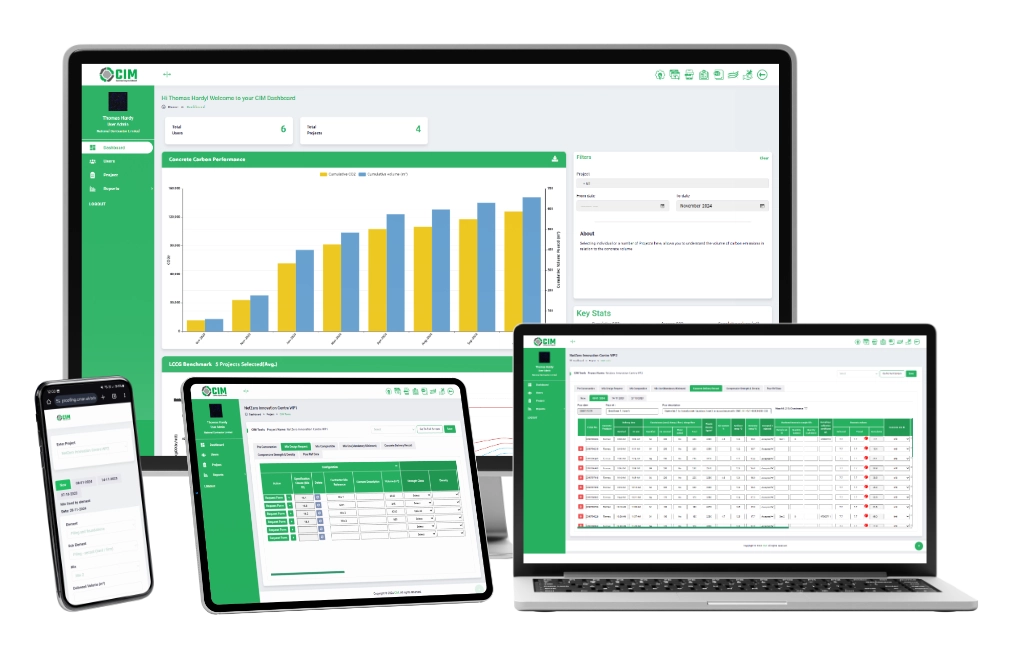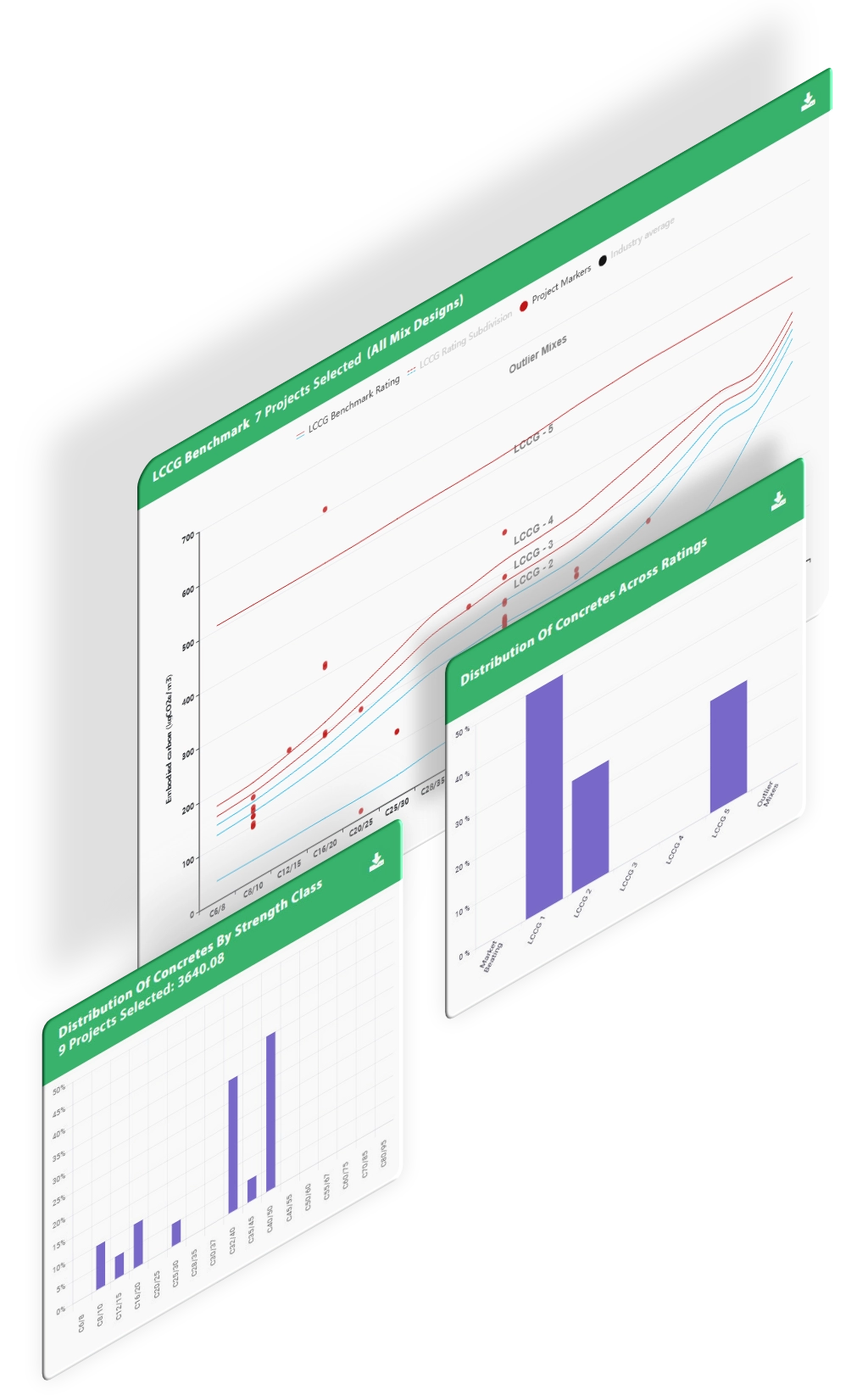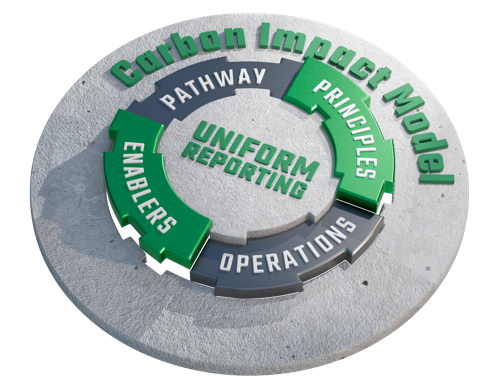Real-time data at your fingertips
Concrete Carbon Emissions Reporting Tool
CIM performs carbon emissions life-cycle assessments of any construction project from the design phase, through delivery of materials to construction and collaborate with other industries.
Click here to download a PDF version of this page.

Predict
Easily forecast the carbon intensity of a construction project at design stage.
Calculate
Auto-calculate the actual carbon intensity of specific concrete compositions.
Record
Record and report accurate concrete consumption and carbon intensity.
Report
Report mix applications against elements on a project, business, regional or industry level.
What is CIM?
Purpose-Built for Construction: Designed by industry professionals to forecast, calculate, record, and report carbon intensity in construction projects.
Performance Tracking: Enables insights into concrete usage across regions and measuring progress on carbon reduction targets.
Sophisticated Web Application: Features an intuitive, multi-level content management system.
Real-Time Data Analysis: Allows organisations to instantly collate and analyse concrete supply chain data for their projects.
Quality Assurance: CIM records the fresh and hardened properties of the concrete that is being used on the project to allow analysis on minimum cement contents and carbon vs strength.

How it works: From Setup to Reporting
The Carbon Impact Model (CIM) is designed to help the supply chain, involved in construction projects and regardless of sector, to collaborate towards its decarbonisation targets using information that is already being recorded, but not necessarily shared or in one place.
CIM calculates, tracks, and reports concrete design consumption and carbon intensity for projects regardless of size and duration.
No additional resources are required as the real-time data captured by CIM is already recorded by projects, albeit in multiple locations.
The process is streamlined into three main stages: Input, Calculation, and Reporting.
The Input Stage
The structural engineer starts the process by entering concrete specification information.
The contractor then reviews and provides more information to pass to the concrete producer, which is the Mix Design Request.
Concrete producer either enters the mix composition information into the tool or issues a mix design certificate for the contractor to enter the material information.
Input concrete mix data, including material proportions (cement, aggregates, admixtures).
Concrete Delivery Record auto-populates mix references, carbon values, total concrete consumption for each application.
The Calculation Stage
Once the data is entered, the CIM platform performs advanced calculations to determine the carbon intensity of your project.
Detailed Emissions Breakdown: Analyses emissions by materials, transport, and other factors for a comprehensive view.
The Reporting Stage
Once the calculations are complete, you can create detailed reports using the platform’s built-in tools:
Customisable Reports: Compile data into easy-to-understand charts, graphs, and tables that summarise the carbon impact of your project. The CIM platform provides comprehensive data collection or, as an option, the basic but mandatory minimum.
Narrative Options: Add your own narrative to the report, explaining the results and their significance to your business or stakeholders.
Export to PDF: Finally, the report can be exported to PDF format, providing you with a professional document ready for internal business updates or client presentations.
Uniform Reporting from Industry
The Carbon Impact Model (CIM) is designed to drive cross-industry collaboration, providing a clear and efficient solution for reporting the carbon impact of concrete use in construction.
Pathway
Clients play a key role in driving decarbonisation by signalling demand to the supply chain. While pathways vary by industry, concrete carbon assessments are essential across all sectors. CIM provides a consistent system for clients to integrate into projects.
Enablers
Since 2022, the Low Carbon Concrete Group routemap has initiated workstreams aimed at NetZero strategies. These enablers, like sharing knowledge, trial data, and carbon intensity, guide decarbonisation. CIM supports these efforts within throughout the industry.

Principles
Key principles for decarbonisation include using materials efficiently and understanding available technologies in each region. By recording and demonstrating material performance through CIM, organisations can promote new solutions and optimise designs.
Operations
Tender documents increasingly request carbon credentials from the supply chain. Using CIM streamlines ongoing carbon assessments for both clients and suppliers involved in repeat projects. CIM also helps the supply chain track progress toward business and project goals.